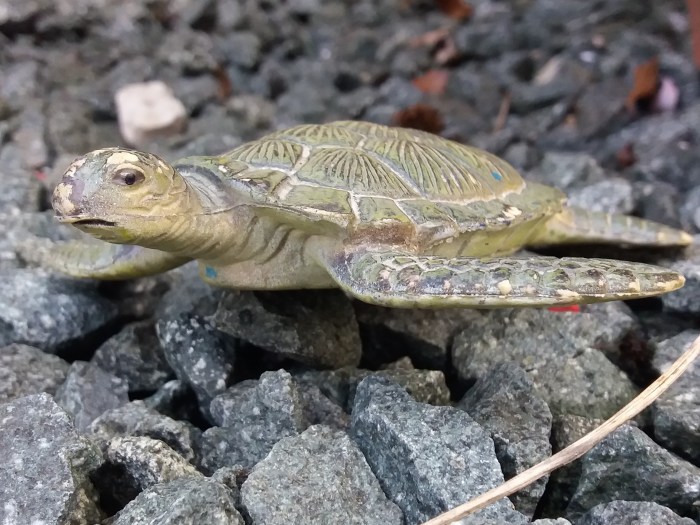With a name like Sirenia, you would think I would have gotten to this point sooner, and before anyone else, but I got here at last, a review of a sirenian. These docile aquatic animals are related to Afrotherians, making this another group of mammals that became fully aquatic and large, alongside the whales.
Author: Sirenia
 I'm Daniel Waite (aka ‘Sirenia’ on the Animal Toy Blog/Forum and ‘Indohyus’ on the Dinosaur Toy Blog/Forum). Ever since I was young, I would love any chance to see animals. Whether it’s visiting Safari parks, zoos, farms or local parks, I would love seeing animals around, doing what they did. Though I skewed towards ancient species later on, I still kept my love for extant species alive. I’ve had many pets, including dogs (my greyhound River is in the photo), cats, ferrets, mice and goldfish. I liked collecting many animal figures over the years, often from my trips to zoos and safari parks, resulting in a vast menagerie of models. As a result, my reviews can come with a heavy feeling of nostalgia. Hope you enjoy!
I'm Daniel Waite (aka ‘Sirenia’ on the Animal Toy Blog/Forum and ‘Indohyus’ on the Dinosaur Toy Blog/Forum). Ever since I was young, I would love any chance to see animals. Whether it’s visiting Safari parks, zoos, farms or local parks, I would love seeing animals around, doing what they did. Though I skewed towards ancient species later on, I still kept my love for extant species alive. I’ve had many pets, including dogs (my greyhound River is in the photo), cats, ferrets, mice and goldfish. I liked collecting many animal figures over the years, often from my trips to zoos and safari parks, resulting in a vast menagerie of models. As a result, my reviews can come with a heavy feeling of nostalgia. Hope you enjoy!All reviews by this author
Ring-tailed Lemur (AAA)

Recently, I went on a visit to the Bristol Zoo with my girlfriend. Unfortunately, it was raining quite heavily, so we ducked into the more covered areas to get out of it. Whilst we were getting out of the rain, we quite enjoyed watching the ring-tailed lemurs (Lemur catta) in the primate section.
Fallow Deer (AAA)

Standing in a glade, head held high, displaying its mighty antlers as he observes his domain. This is the image that comes to my mind when I think of stags, male deer that rut and battle for territory and mates. They are also more common to see in toy form, as their majestic antlers are more likely to grab the attention of kids than the females that lack them.
Hawaiian ‘O’ o (Yowies Forgotten Friends Series A by Cadbury)

As a volcanic island chain, Hawaii is not known for it’s ancient fossil fauna, but it has a selection of modern extinct species. The ‘O’ o (or Moho, based on the scientific name) were a group of birds that were native to Hawaii, now all extinct, the last being recent enough to have recordings of it’s mating call (worth hearing, though prepare to be moved to tears).
Platypus, pair (Noah’s Pals by Caboodle! Toys LLC)
Green Sea Turtle, young (AAA)

There are not many creatures that have such an uphill struggle at the start of life than sea turtles. From getting out of their egg and nest, to the mad dash to the sea, all the time being potentially picked off by predators of land and sky. When they reach the sea, it will take years to be big enough to be safe, having to evade water predators.
Dodo (Yowies Forgotten Friends Series A by Cadbury)

The Dodo has quite the reputation among extinct animals, but the image has always been a bit skewed. Most portarits are based either on third or fourth hand accounts, and most European depictions are from obese specimens kept by gentry that didn’t know how to care for them properly. Modern skeletal analysis now shows it was sleek, brown and quite aggressive.
Dolphin (AAA)

Cetaceans are an amazing example of the adaptability of the mammals. From giant filter feeders to smaller predators, they have a great variety of forms. This includes ones that mimic much older species, convergently evolving similar features to deal with the same environment. This review looks at a great example of this: the dolphin, which has similar adaptations to the extinct ichthyosaurs.
Dodo, pair (Noah’s Pals by Caboodle! Toys LLC)

If something is “as dead as a Dodo”, it is very dead, gone forever, reflecting on the fate of said animal, the Dodo. From the island of Mauritius, these flightless pigeons roamed the land, eating fruit and shellfish and lacking fear. Then man came along and introduced new predators, ones that Dodo’s lacked, and soon they were gone from their native lands, never to return.
Boar (Early Learning Centre)

When you think of domesticated farm animals, one of the first to be thought of is the pig (Sus scrofa domesticus), the delightful omnivore of the farm. There is something quite charming about the pig, maybe because it eats anything like we seem to, hence the expression “as greedy as a pig” (yes, that is from “Snatch”).
Great Auk (Yowies Forgotten Friends Series A by Cadbury)

The tragedy of the Great Auk is a tale that covers much of the globe. These sea birds lived across the Atlantic, catching fish and having large flocks across islands throughout the Atlantic. They were killed for down in pillows, the bills for Native American charms and for fuel and food for sailors.
Hippopotamus (FINA Save Wildlife Collection by Toy Major)

When most think of dangerous animals in Africa, known for killing people, most will think of lions, crocodiles, and hyenas (oh my!). But the animal that actually kills the most people is the common hippopotamus, as they can be very aggressive about their territory. But leave them be and they are benign, incredible animals.
Upland Moa (Yowies Forgotten Friends Series B by Cadbury)

When most people think of the Moa, it is likely they will only think about the giants of these birds, specifically the South Island Giant Moa. The reality is, however, that there were many Moa species across New Zealand, filling niches that in other parts of the world are filled by mammals.
Meerkat (AAA)

The African plains has some fantastic animals living across it. Gorillas, elephants, rhinos, and other magnificent large animals. But some of the smaller creatures also garner respect and attention. For me, the one that gains this are the meerkat (Suricata suricatta), small carnivores that live in packs across the savanna, eating small animals and dodging larger predators.
Steller’s Sea Cow (Extinct by Club Earth)

The gluttony of humanity has had catastrophic effect on the flora and fauna of the world, resulting in destruction and extinction. The example here is a clear exhibition of this: the Steller’s Sea Cow, a sirenian colossus that once lived in the Bering straits, it was wiped out by Europeans within 27 years of it’s discovery, being easy to catch and full of tender meat.


